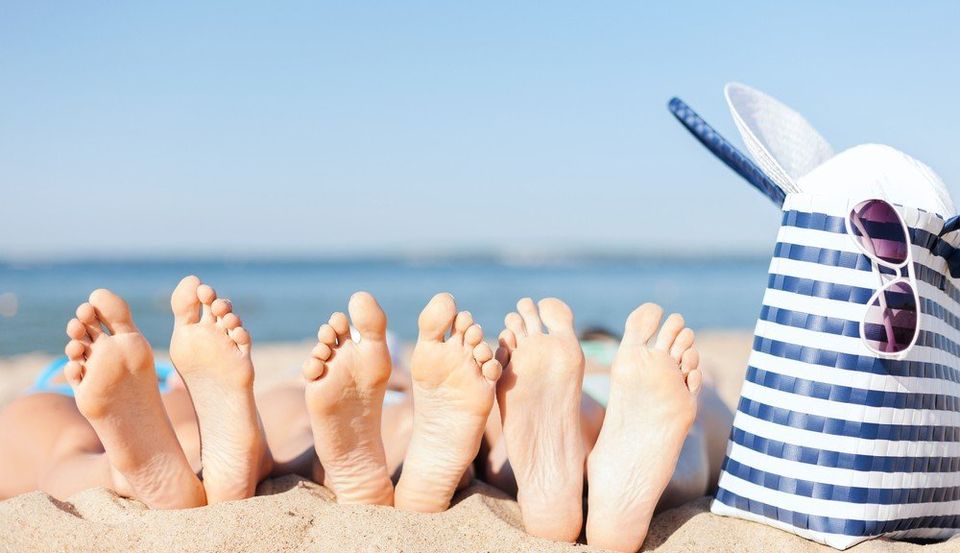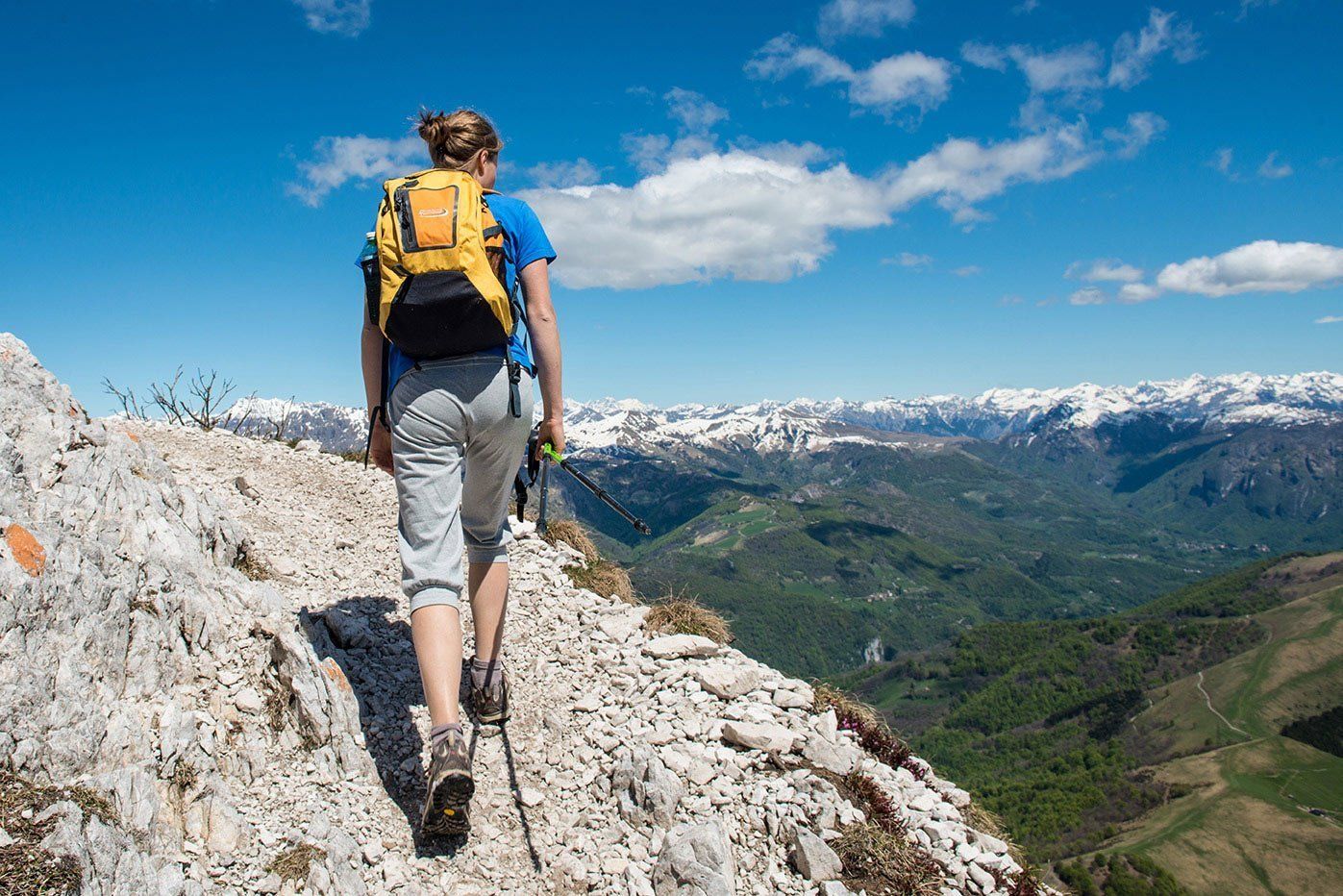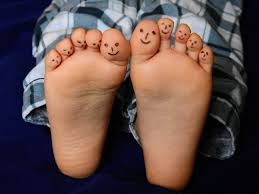Take a good, hard look at your feet. Are they ready for the summer?
By Reggie Simpson published in large part in the summer edition of Tring Living
The warm, sunny weather in March has already had some people out in shorts and sandals.
Whether exposed in open footwear or encased in closed shoes), you need to minimise potential abuse to your feet. Contrary to winter, feet are more susceptible to problems in the summer.
Common foot complaints
Here are some traditional foot issues and our take on how to manage them, ‘home or away’:
The problem: Fungal infections
Athlete’s foot is one of the most common fungal infections. It causes flaky, red skin with white cracks that can be agonizingly itchy. Fungal infections in the nails can also cause problems and shouldn’t be ignored as, if left untreated, they can spread to other nails.
Home solution
·Anti fungal treatments
·Soak your feet in Tea Tree oil
·Use antibacterial wash such as Hibiscrub®.
·Consult pharmacist for other over the counter treatments
Professional help
You only need to visit your GP or a podiatrist if your Athlete’s foot persists or is causing you wider discomfort or other foot problems.
The problem: Ingrown toenails
This is a painful condition when the toenail has grown into the skin on the side of the nail bed. It can become infected.
Professional help
It is best to seek professional help from a podiatrist who can remove the spike of the nail and cover it with an antiseptic dressing. In extreme cases, antibiotics and nail surgery may be required.
The problem: Corns and calluses
Corns are small but painful areas of thickened skin that are caused by repeated pressure on the area, such as from socks and tights or badly fitting shoes. Foot position and/or how you walk can also contribute. Heredity may also play a part.
Calluses usually occur on the sole or heel of the foot. Corns and calluses are symptoms of an underlying problem. You should only self-treat (using Compeed© for example for corns) if you know the cause and you've spoken to a specialist about the best way to manage them. Shaving away your calluses on your own may only cause bleeding and discomfort and could lead to infection.
Professional help
A podiatrist can help to treat corns or badly callused areas using a sharp blade to remove the thickened area of skin. This should help reduce pain and discomfort. Further advice on self-care and prescribing special insoles can also be given.
The problem: Bunions
Bunions are a misalignment of the joint at the base of the big toe. It’s usually genetic, and you can live with it most of the time. Problems are caused when it becomes inflamed and painful, usually at the part where it meets the shoe.
Flat shoes can actually make the problem worse as they don’t provide any support, as can high heels or pointy shoes.
Professional help
If bunions have become painful then they may require surgery to correct the misalignment.
Verrrucae (warts)
Verrucae are caused by the Human Papilloma Virus (HPV). The virus invades the outermost layer of skin and causes visible lesions. Our immune system is far more active in the deeper layers our skin, which explains why verrucae are so resilient. The virus is contagious and can be spread.
Home solution
You can try over-the counter solutions such as Bazooka© or salicylic acid-based treatments, but verrucae tend to persist without professional help.
Professional help
Betafeet Podiatry offers the following verrucae treatments:
·Salycidic acid (prescription strength)
·Cyrotherapy (freezing)
·Falknor’s Needling (requires surgery consent)
·Swift Microwave Therapy (new): https://www.betafeetpodiatry.co.uk/swift-microwave-therapy-for-verrucae
Final thoughts
This list is by no means exhaustive, but there are some other feet health issues to also consider:
Diabetes
Diabetics need to be especially careful about their feet; a lack of sensation when, for example, treading on potential hazards, as simple as stepping on a thorn, could lead to life changing complications due to poor healing ability. Aside from daily foot checks, diabetics should not walk around barefoot. Wearing socks and appropriate footwear helps todecrease the risk of developing blisters and sores, which could lead to wider infection.
Gout
This is by no means an old man’s illness or old wives’ tale. Gout can be hugely painful and debilitating at any age. Gout is a form of arthritis and can be controlled by medication or following a diet.
Climate plays a big role for gout sufferers especially when it’s hot and humid, which can lead to dehydration and triggering a gout attack. So think on your feet when venturing out in the summer.
***
Of course, the best treatment for any or all of foot ailments is to avoid them in the first place. Here are some tips:
·Keep your feet, especially the area between your toes, clean and dry.
·Air and change your shoes and socks often to help keep your feet dry.
·Avoid synthetic socks (nylons) where possible.
·Exfoliate your feet regularly.
·Make sure you wear sandals in public showers or wet areas.
·Stay away from talc on the feet.
·Moisturise your feet daily.
·See a podiatrist when you can no longer self-manage.
June is ‘Feet for Life Month’ and you can find out more information on foot health with free leaflets and tips at the College of Podiatry website: www.feetforlife.org.






